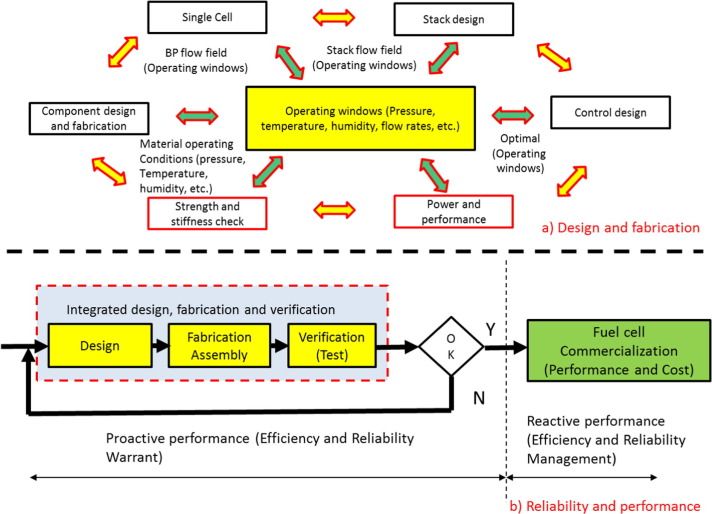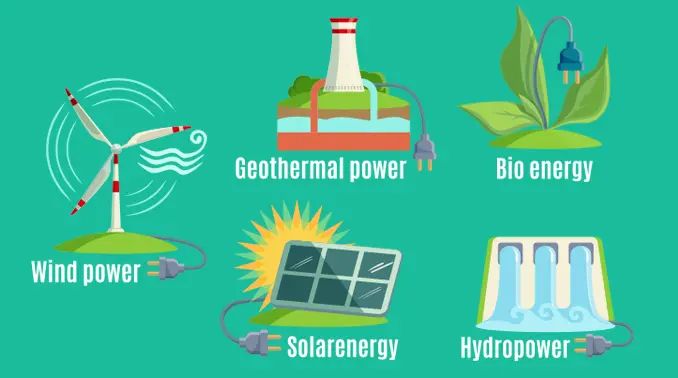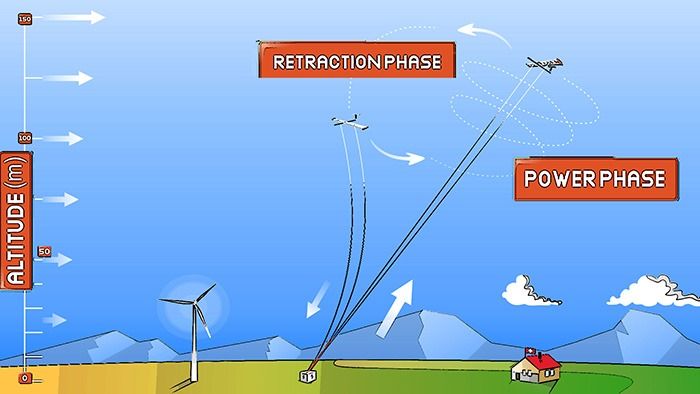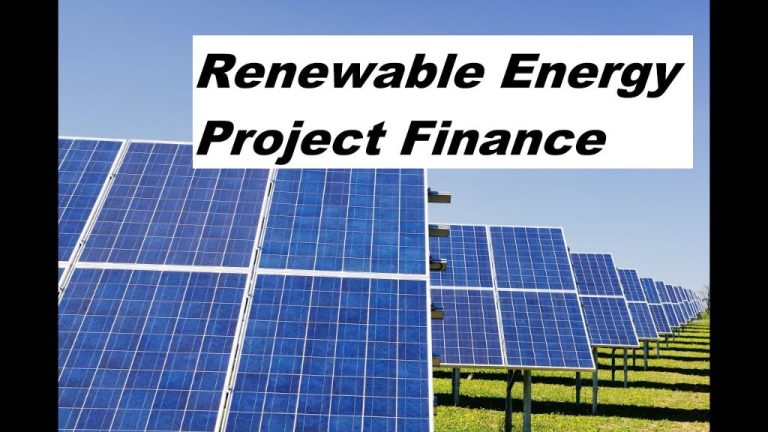How Is Alternative Energy Good?

Alternative energy refers to energy from sources other than fossil fuels like coal, oil, and natural gas. Alternative energy sources include renewable options like solar, wind, geothermal, hydropower, and biomass. They also include “clean” fossil fuel options like nuclear power. With climate change accelerating and fossil fuel supplies dwindling, there is an urgent need to transition to alternative energy sources that are renewable and less polluting. According to a report by the Intergovernmental Panel on Climate Change, the world must cut greenhouse gas emissions in half by 2030 and achieve net-zero emissions by 2050 to avoid catastrophic climate impacts. Transitioning to alternative energy sources like solar, wind, and nuclear is a key strategy to meet these targets and build a sustainable energy future.
Reduces Reliance on Fossil Fuels
The global supply of fossil fuels like oil, coal, and natural gas is finite and steadily dwindling. Roughly 80% of the world’s energy needs are currently met through burning fossil fuels. However, fossil fuel reserves are being depleted much faster than new ones are being discovered (UN Report). Transitioning to renewable energy sources like wind, solar, hydropower, geothermal, and biomass allows countries to become more energy independent and secure by relying less on imported fossil fuels. Renewable energy sources can provide sustainable, clean electricity to power homes, businesses, and vehicles indefinitely into the future.
Mitigates Climate Change
Alternative energy sources like solar, wind, hydroelectric and nuclear produce little to no greenhouse gas emissions compared to burning fossil fuels for energy. Studies show that the lifecycle emissions from renewable sources are up to 200 times less than coal and natural gas. Widespread adoption of renewables dramatically reduces emissions that contribute to climate change.
One study found that transitioning to 100% clean electricity in the U.S. by 2035 could slash power sector emissions by 80% compared to 2005 levels (https://www.sciencedirect.com/science/article/pii/S1876610217358514/pdf?md5=6e6503c47d7dc0837ecf26638e2cb0d6&pid=1-s2.0-S1876610217358514-main.pdf). Solar and wind already make up 10% of utility-scale generation in the U.S., avoiding over 300 million tons of CO2 annually. Experts estimate that increasing this share to 40% by 2035 is needed to avoid the worst impacts of climate change.
The development of renewable energy goes hand in hand with climate change mitigation efforts. Government policies that incentivize clean energy and put a price on carbon can accelerate the transition away from fossil fuels. Widespread adoption of alternative energy is critical for reducing emissions and preventing the most catastrophic climate change scenarios.
Improves Public Health
Alternative energy sources like solar, wind, and geothermal produce little to no air pollution compared to fossil fuels, resulting in cleaner air. According to a Harvard study, replacing fossil fuel electricity generation with renewable energy could prevent over 50,000 U.S. deaths annually from air pollution. Switching to clean energy also reduces emissions of mercury, sulfur dioxide, nitrogen oxides, and particulate matter, leading to lower incidence of respiratory and cardiovascular diseases.
Furthermore, renewable energy systems require less water for electricity generation and cooling compared to coal, nuclear, and natural gas power plants. This helps conserve freshwater resources. Hydropower generation itself does not consume water, only using what flows through turbines. Geothermal plants use water, but in closed loop systems that recycle the water. This avoids drawing down limited water supplies while producing energy, especially in arid regions.
Creates Jobs
Alternative energy supports job creation across various sectors and occupations. The renewable energy industry directly employs over 3 million people globally according to the International Renewable Energy Agency (IRENA) [1]. In the United States alone, clean energy jobs increased to 3.4 million in 2021, up 4% from the previous year according to E2’s Clean Jobs America report [2]. These jobs span manufacturing, construction, operations, distribution, and other roles.
Some of the fastest growing clean energy jobs include solar installers, wind turbine technicians, energy storage technicians, electric vehicle infrastructure builders, smart grid modernizers, green builders, and more [1]. Many state governments also offer tax credits and incentives for renewable energy job creation. For example, Virginia offers a Green Job Creation Tax Credit for eligible positions in solar, wind, geothermal, and other alternative energy sectors [3].
Overall, alternative energy presents significant opportunities for economic and employment growth across diverse industries and skill sets.
Lowers Energy Costs
Alternative energy sources like solar, wind, and geothermal can lower electricity prices over time. As more alternative energy comes online, it increases electricity supply and reduces demand for fossil fuels. Greater supply and lower demand puts downward pressure on electricity prices.
For example, the cost of solar panels has dropped 89% over the last decade, making solar power competitive with fossil fuels in many areas. As solar adoption grows, it pushes down wholesale electricity prices. Studies show that doubling solar generation capacity in California could lower electricity prices by up to 19% by 2030.
Wind power has seen similarly steep cost declines. According to the Department of Energy, the average cost of land-based wind power fell by around 70% over the last decade. Greater wind capacity reduces natural gas demand and wholesale electricity prices.
Geothermal energy also provides low-cost, renewable baseload power that reduces reliance on coal and natural gas. The California Energy Commission found geothermal to be the lowest-cost renewable energy technology.
In summary, transitioning to alternative energy sources like solar, wind, and geothermal can put downward pressure on electricity prices over time by increasing renewable supply and decreasing fossil fuel demand. This cost reduction makes alternative energy an attractive option for consumers and utilities alike.
Sources:
https://www.energy.ca.gov/filebrowser/download/718
https://www.energy.ca.gov/sites/default/files/2019-05/Loan_Agreement_ECAA_Funded_Template_0.pdf
Supports Rural Communities
Investment in renewable energy can provide significant benefits for rural communities. According to research from the ncIMPACT Initiative, rural areas in North Carolina that have implemented solar and wind power see improvements in revenue and job creation, while also contributing to climate change mitigation. The stable income from renewable projects helps support rural schools, fire departments, and infrastructure.
A report by the Center for American Progress found that the Department of Energy’s community benefits plan requirement allows renewable energy investments to achieve multiple policy goals, like rural development. By incentivizing community engagement and benefit sharing, renewable projects can lead to job training programs, new infrastructure, and revenue sharing for rural towns (Leveraging Renewable Energy Investments for Rural Development).
In addition, a study from CohnReznick shows three key ways renewable energy benefits rural areas: increased tax revenue from projects, job creation in construction and operations, and stable lease payments to landowners. With strategic policies and community involvement, renewable energy investment can greatly assist rural towns with economic development and sustainability.
Advances Innovation
The need to develop affordable, efficient, and sustainable alternative energy sources is driving significant innovation in renewable energy technologies. As governments, businesses, and investors pour more resources into renewable energy research and development, breakthroughs are being made at an impressive pace.
For example, recent advances in solar photovoltaic technology have led to a rapid decline in costs, making solar power cost-competitive with fossil fuels in many parts of the world. Companies are innovating with new materials and production methods to improve solar panel efficiency and flexibility (Wislar). Wind turbines are also becoming dramatically more powerful and efficient. And on the storage side, progress is being made with utility-scale batteries that can store renewable energy and provide backup power.
The drive for alternative energy is catalyzing cross-disciplinary research. Engineers, scientists, and entrepreneurs around the world are collaborating and competing to create the next wave of clean energy breakthroughs. This accelerated innovation promises to lead to continuing cost reductions and performance improvements in renewables.
Improves Energy Security
Alternative energy sources like wind and solar power allow for more distributed electricity generation, reducing vulnerability and increasing resilience of the power grid. Rather than relying on a few large centralized power plants, distributed renewable energy assets generate electricity closer to where it will be used, limiting the impact if any one plant goes offline. This distributed generation model makes the grid less susceptible to disruptions and improves energy security.
Sources like the National Renewable Energy Lab (NREL) have researched how to enable a more resilient and reliable grid through technologies like microgrids and grid integration. As NREL states, “NREL researches and develops tools and technologies to enable a more resilient, reliable, and secure electric grid.” (https://www.nrel.gov/grid/security-resilience.html)
With climate change leading to more extreme weather events, a distributed renewable energy grid is also able to better withstand storms and disasters. The decentralized nature limits widespread outages. Renewable sources can be designed and built to be resilient to disasters in their geographic area.
Conclusion
In summary, alternative energy sources like wind, solar, geothermal, and biomass offer numerous benefits compared to fossil fuels. They significantly reduce greenhouse gas emissions and our reliance on finite resources like coal and natural gas. Widespread adoption of renewables will be critical for mitigating climate change and protecting the health of our planet for future generations. Transitioning to alternative energy also enhances energy security, creates new jobs, spurs innovation, and lowers costs over the long term. While there are still challenges, the advantages clearly demonstrate that alternative energy represents the future. We must continue advancing renewable technology, infrastructure, and policy to fully realize the potential of sustainable energy.






